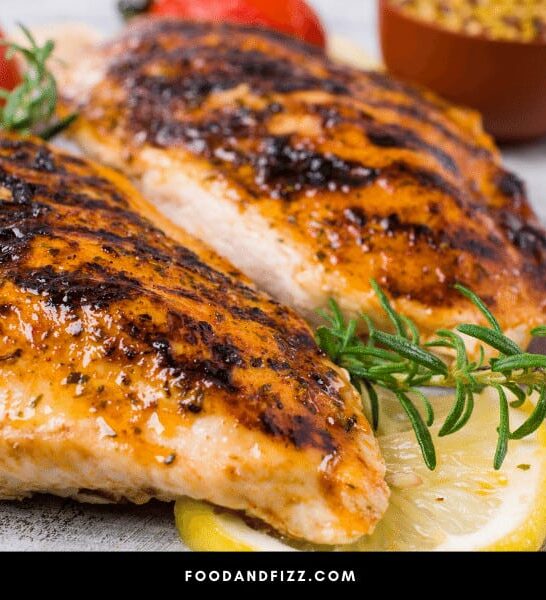How do I Prevent Burned Chicken Breasts When Cooking on the Stovetop? Chicken breasts are often the protein of choice for people who choose to eat a healthy diet. It offers the many health benefits of chicken, with lesser fat, and is overall a good quality source of protein.
They are fairly simple to cook and meet the time requirements for a quick, easy meal. Sometimes, though, simple things are the most intimidating to get just right.
Chicken needs to be thoroughly cooked at a temperature of at least 165 F to be safe from bacteria that cause food-borne illnesses. As such, overcooked chicken or, worse, burnt chicken breasts are common in the kitchen, especially for the overly cautious.
Overcooked and burnt chicken breasts will still be edible, especially if your dish has a sauce to mask the texture, but frankly, it just won’t be as good. And why waste the opportunity to make delicious food? Why settle for this when you can have healthy, flavorful, delicious chicken breasts cooked right?
So how do I do this? How do I make my easy weeknight dinner as delicious as it can possibly get? How do I prevent chicken breasts from burning on the stovetop?
How Do I Prevent Chicken Breasts from Burning on the Stovetop?
To prevent chicken breasts from burning on the stovetop, ensure that the chicken is at room temperature prior to cooking, and second, pound your chicken breasts so that they are of thin, even thickness. Depending on the recipe, you can also cube your chicken breasts. Next, make sure to use the right type of pan and use the right kind of oil. Aside from this, you can also deglaze the pan using stock, water, or wine and cook the other ingredients in the pan with the chicken so that it can cook for a longer time without burning. Following these tips not only ensures that your chicken will not burn on the stovetop but will also ensure you get the maximum flavor out of your chicken breasts.
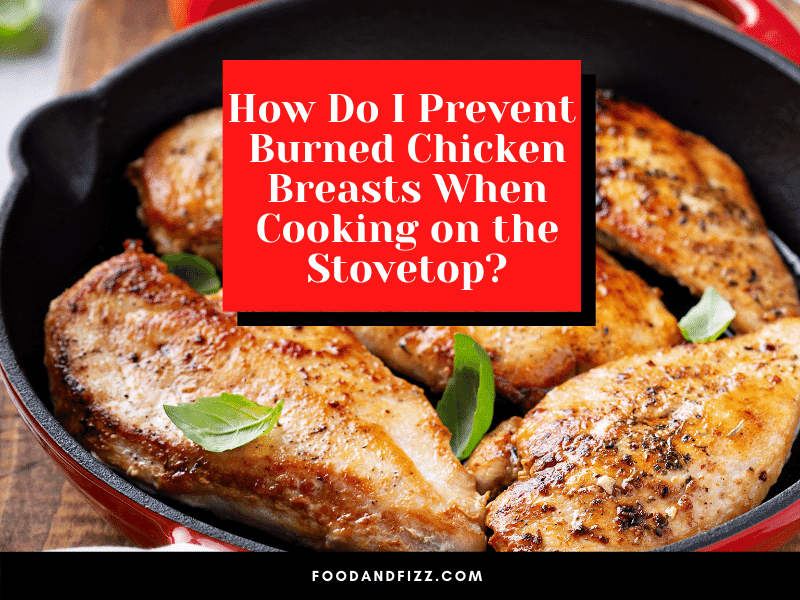
What Are Chicken Breasts?
Chicken breasts are the lean, white meat taken from the chest part of the chicken. They are lighter in color and milder in flavor, and because of the nature of the meat, they are the most prone to overcooking.
Compared to dark meat like chicken drumsticks and thighs, chicken breasts are generally a bit more subdued in terms of flavor and can lose their moisture and dry out more easily.
They are versatile though and work in many recipes. As long as they are prepared and handled properly, it is possible to get juicy, flavorful chicken breasts along with their many health benefits.
What Are The Health Benefits of Chicken?
Chicken is very versatile and is overall a good source of protein, vitamins, and minerals and is a good addition to a healthy diet. Chicken breasts, in particular, have been touted as the better meat for the health-conscious.
Compared to their dark meat counterparts, chicken breasts are lower in fat and higher in protein, making them the chicken part of choice for those working out to build muscle mass. They also have slightly lower calories and saturated fat and are an ideal choice for those watching their caloric and fat intake.
To get the full health benefits of chicken, it is important to mix them up and consume both dark and white meats on occasion.
Below are some of the health benefits of chicken:
- Good source of high-quality lean protein for muscle mass and development
- Rich in B-vitamins and other vitamins and minerals like selenium, choline, calcium, iron, and zinc
- Contains Vitamin D and A
- Aids with heart health and managing cholesterol levels
All these benefits in the chicken are wonderful and exciting, but it is important to note that how the chicken is prepared also matters in order to get its full health benefits.
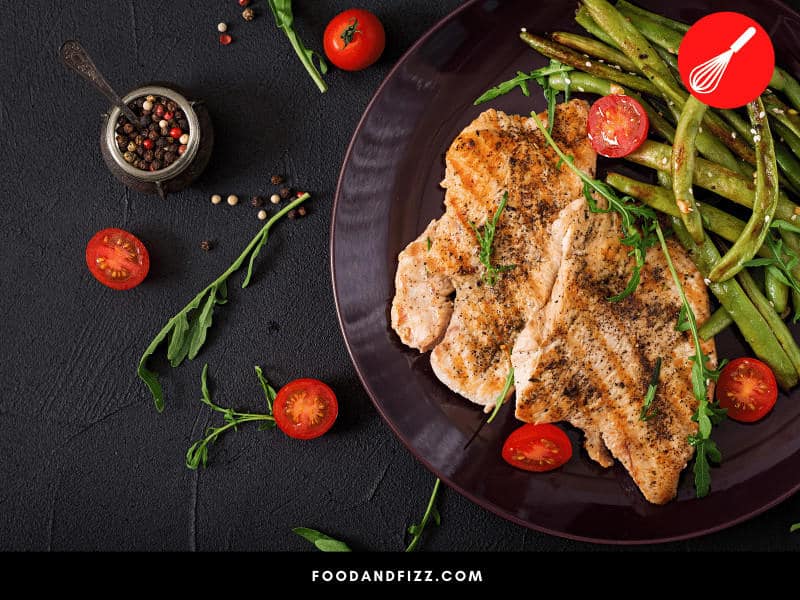
How Do I Cook Chicken Breasts?
Chicken can be cooked in a variety of ways but chicken breasts, because they easily overcook, are best suited for quick-cook methods such as stir-frying, sautéing, pan-frying, and broiling.
How Do I Know If Chicken Breasts are Cooked?
Using a meat thermometer is still the best and most accurate way to know that your chicken is cooked and safe to eat. According to food safety regulations, chicken is cooked when it reaches a temperature of at least 165 °F on a meat thermometer.
If you do not have a meat thermometer, you may also cut into the chicken and check if the meat juices are clear. Pinkish or reddish hues in the chicken breast in the meat juice mean that you need to cook it for longer. Undercooked chicken breast may look pinkish but the only way to tell accurately is through the use of a meat thermometer.
Chicken breast, though, cooks faster than other chicken parts, especially those closer to the bone. So, it is important to be on top of this process as overcooked or burnt chicken breasts can happen very quickly.
Tips to Prevent Burnt Chicken Breasts
Chicken breasts cook faster than their dark meat counterparts, and because of this, it is important to keep a close eye on them and take precautions to ensure that they are not overcooked or burnt.
Here are some tips to follow to make sure your chicken breasts do not burn while cooking on the stovetop:
1. Make sure your chicken breasts are at room temperature
Starting with room temperature chicken ensures even and proper cooking of both the outside and inside of your chicken breast.
If your chicken breasts are frozen, only the outside part of the chicken will react with the heat source, as heat while cooking on the stovetop comes from the outside only.
This will leave the outside of your chicken cooked, possibly burnt, while the inside will still be raw.
2. Pound chicken breasts so that thickness is even and will cook more evenly
Use a meat mallet to pound your chicken breast to ensure that it is of relatively uniform thickness prior to cooking. You can use a technique called “butterflying” to make this process easier.
This essentially means that you split a chicken breast in half and open it up. Pounding a butterflied chicken breast not only ensures that thickness is uniform, it also tenderizes the fibers in the meat, making them cook faster.
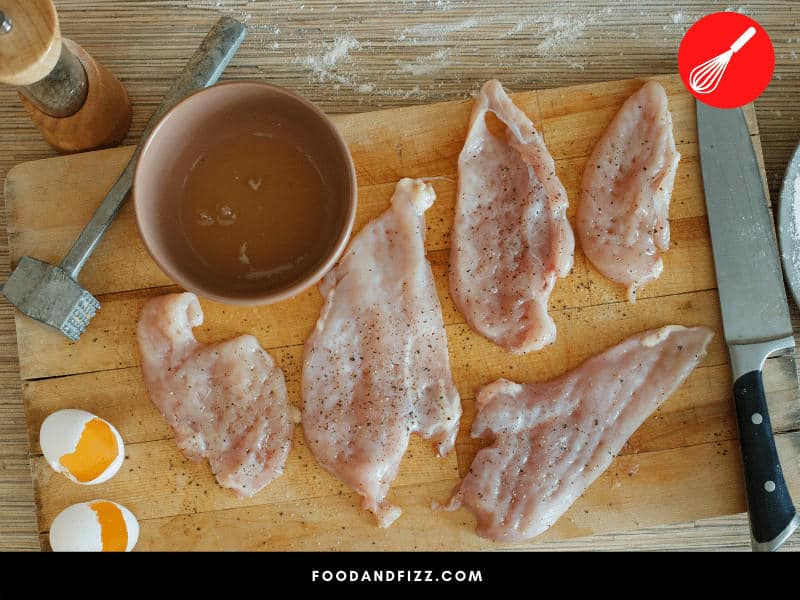
3. Cube your chicken breasts
Depending on the recipe, you may also opt to cube your chicken breasts into small, even chunks. Smaller chunks of chicken will cook faster, which means you will not need to keep your chicken over the heat for very long before they are done, reducing the chances of burning them. This works especially if you’re opting to stir-fry.
4. Use the right kind of pan and the right type of oil
The type of pan and oil that you use will affect how your chicken breasts cook. Cast-iron pans conduct heat very well, so they tend to get hot very quickly compared to other types of pans. On that note, make sure your cast iron pans are properly seasoned and maintained, to ensure proper cooking of food.
Depending on your skill level, this might cause difficulties in cooking in high heat, which may lead to your chicken breast burning before it is properly cooked.
The type of oil we use will also affect how our chicken breast cooks. Different types of oil have different smoke points or the point at which they start smoking or burning.
Not only will it contribute to burning your chicken breasts, but it may also have adverse health effects.
Especially for high heat cooking like stir-frying, use an oil that has a higher smoke point, like refined coconut oil, safflower, or peanut oil.
Oils with lower smoke points like extra virgin olive oil, flaxseed, or walnut oils will not work for high heat cooking and are best used for dips and dressings.
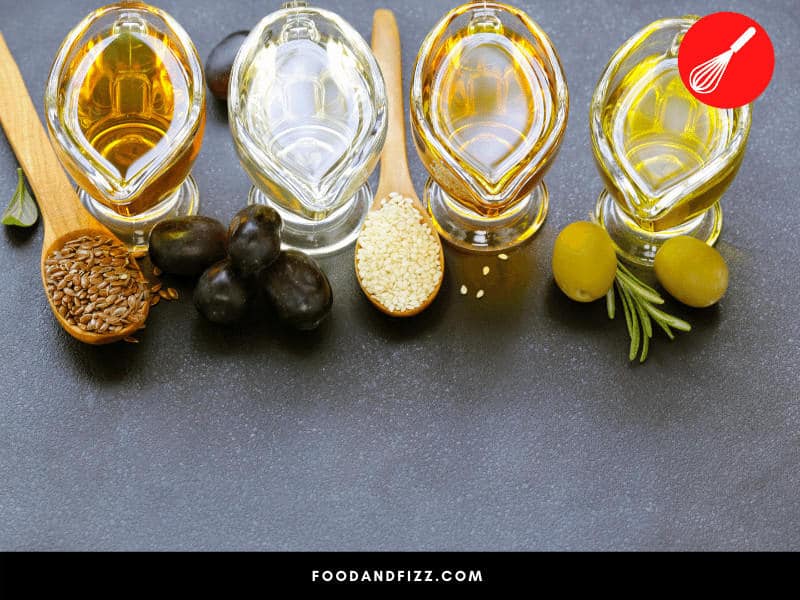
5. Deglaze the pan or build your sauce in the pan
To prevent chicken breasts from burning, you may cook your chicken at high heat for a few minutes to sear, caramelize and seal in the juices, and then lower the heat and deglaze the pan with water, stock, or wine.
Doing this diffuses the heat of the pan and allows you to cook your chicken longer without worrying about burning them.
Some cooks also suggest continuing to cook your sauce in the pan without removing the chicken, lowering the temperature as another ingredient is added.
The addition of other ingredients prevents the chicken from burning, as well as infuses your chicken with a deeper flavor, resulting in a better-flavored dish.

Conclusion to How Do I Prevent Burned Chicken Breasts when Cooking on the Stovetop?
Chicken breasts can be a wonderful addition to a healthy diet, and when done right, can be a testament to the fact that healthy food can be tasty.
As long as you follow these tips and take precautions with how you prepare them, you can definitely get the best of both worlds: eating food that’s delicious and flavorful, while being healthy and good for you as well.
Frequently Asked Questions on How Do I Prevent Burned Chicken Breasts When Cooking on the Stovetop?
Does Chicken Breast Cook More Quickly Than Chicken Thighs?
Yes, chicken breast is leaner and cooks more quickly than its dark meat counterparts. Because of this, they can easily dry out and are more prone to overcooking and burning.
Can I Cook Chicken Breast from Frozen?
It is not advisable to cook chicken breast from frozen. To ensure even and proper cooking of chicken breasts, it is important to start with room-temperature chicken. Otherwise, you may end up with chicken that’s overcooked or burnt on the outside and raw on the inside.

